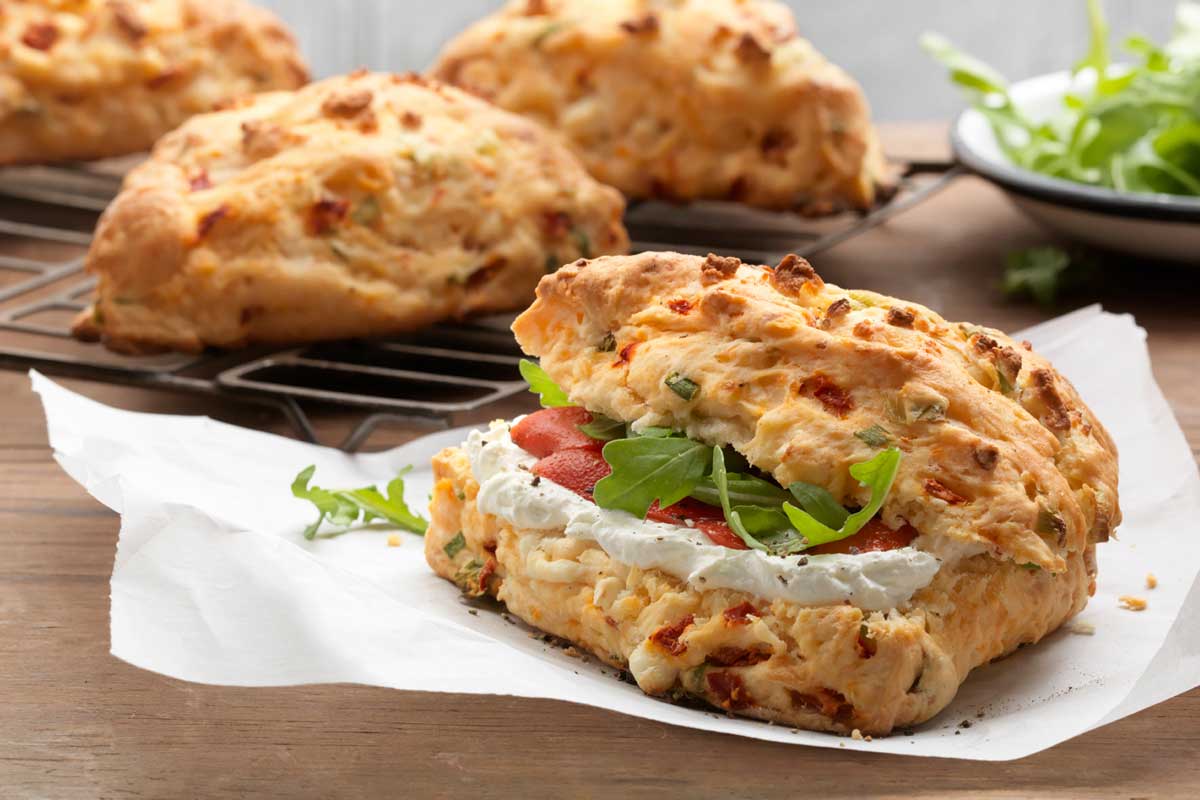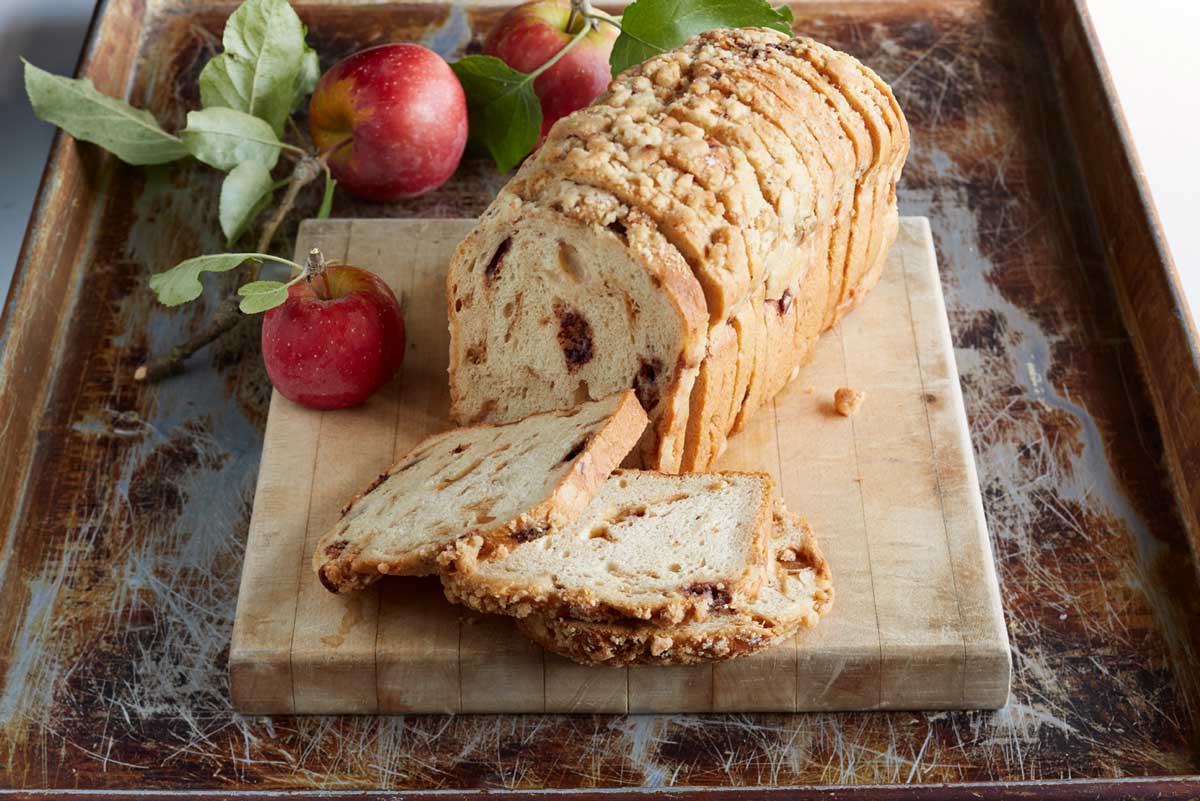Beyond the loaf of standard white bread, baked foods can be very complex systems. Many contain highly functional ingredients in miniscule amounts. A slight error in addition could turn into a quality control nightmare.
The same is true for the growing number of baked foods that are getting a boost of extra nutrition, an effort known as fortification. Too much of a good thing can be dangerous, while not meeting nutrient content claims is an invitation for a lawsuit. Proper dosing is paramount.
There’s ample room for error when measuring and adding minor ingredients to bakery systems. Accuracy requires skill and time. This is something many bakers do not have readily available.
“When there are more ingredients, there is a higher risk that one could be mis-scaled or improperly added to the recipe,” said Susan Murphy, product manager, bakery mixes and improvers, Puratos. “When skilled labor is not available, a bakery mix can provide an easy way to ensure correct scaling and mixing to deliver the best product to your customers.”
Base-ics
Mixes and bases — the latter also are often referred to as concentrates — come into play to simplify commercial baking. These dry blends of ingredients are designed for ease-of-use. No longer is it necessary to measure each individual ingredient and then make sure it’s evenly distributed in the batter, dough or baked matrix. Mixes and bases also simplify inventory and tend to produce less waste due to error.
In some instances, they even protect intellectual property, as the recipe is not being shared with the bakery production team. Key dry ingredients are blended together in the mix or base at a separate location. Addition levels and specific brands/sources are not disclosed.

With the rise in special dietary considerations — allergies, religion and avoidance — mixes and bases reduce the chance of mislabeling and cross-contamination. They make it easier for bakers to meet a variety of consumer needs safely and consistently.
In general, a mix contains all or most of the dry ingredients, including the predominant ingredient: flour(s).
Conversely, bases typically do not contain flour. Bases are pre-measured packs of dry ingredients that the baker adds to a specified amount of flour. Both systems require the addition of liquid ingredients for hydration.
Commercial bakery mixes are not much different from the single-use packages consumers purchase from the grocery store. A buttermilk biscuit mix, for example, may contain flour, dried palm oil, chemical leavening agent, salt, buttermilk solids, sugar and dried whole egg. The baker simply adds water and employs a one-stage mix before depositing on the pan and baking.
The Old World bread base from Brolite Products Inc. simplifies the Old World baking process. Its primary ingredient — cultured wheat — is fermented for many hours and then ground and dehydrated into a powder bringing a natural fermentation flavor to a bromate-free base.
“One of the main benefits of using a mix or base is to help the baker produce an outstanding, tolerant and consistent product,” said Steve McIver, tortilla and flatbread specialist at Brolite. “Because the formulation and processing has been streamlined, the manufacturing process is more tolerant throughout the production process, resulting in higher efficiency of total operation.”
Not only do mixes and bases streamline formulation, but they also reduce opportunity for human error.
There’s ample room for error when measuring and adding minor ingredients to bakery systems. Accuracy requires skill and time. This is something many bakers do not have readily available.
“Mixes allow for consistent results, regardless of changes in staff, training and skill level and other workforce challenges,” said Don Trouba, senior director, go-to-market, The Annex by Ardent Mills. “They also enable your existing workforce to reduce time spent on scaling and measuring, freeing staff up to focus on other activities.”
While there remains some measuring involved, namely with the liquid ingredients and maybe the flour when working with bases, there’s some room for error with these larger volume ingredients. In some instances, mixes can be packed in portions designed to be paired with standardized portion packs of liquid ingredients such as eggs, cream and oils. The goal is to make baking as simple as possible.
Nicole Rees, product director, AB Mauri North America, said mixes allow for the production of high-quality baked foods by a variety of people, virtually anyone, as the “know how” comes right in the bag.
“Processing is simplified due to foolproof instructions,” she said. “Mixes are ideal for bakeries with minimal staffing because of the ease-of-use and flexibility to produce a large portfolio of finished baked goods with just one mix or base. Also, it is often not possible logistically and financially for some bakeries to manage and purchase inventory of dozens of raw materials and ingredients, let alone screen each for quality.”
Another perk comes in the form of cleanup and air quality at the manufacturing plant.
“When opening one bag without the need of scaling, less ingredient dust will be blown around, spilled and unnecessarily wasted,” Mr. McIver added.
While mixes and bases simplify, they also may complicate when there’s a quality issue. This may occur with the addition of flavorful ingredients, from aging equipment or even seasonal variations in liquids.
“The baking mix supplier procures and tests the dry ingredients, weighs them accurately, blends them to a homogenous state and provides general mixing and baking instructions,” said Chris Thomas, principal technical service technologist, Ingredion, Inc. “That said, one of the challenges with using baking mixes is that the pre-blended ingredients inhibit some of the flexibility a baker may need. You are locked in on a usage level on some highly functional ingredients that a baker may want to vary to troubleshoot an issue.”
It’s all in the mix
Bakery mixes are dry systems typically based on some sort of flour — wheat, pulse, ancient grain or a blend. It’s the predominant component and serves as the carrier for the other ingredients. Those can vary based on product, intended use and desired shelf life of the mix, as some ingredients, unless protected usually via encapsulation, can negatively impact the mix over time.
Some fats may oxidize. Enzymes can lose efficacy. Sweeteners might brown. Other common dry ingredients in mixes include leavener (yeast or chemical), egg solids and milk solids.
“Mixes are especially beneficial for specialty products,” Ms. Murphy said. “Traditional pan de muerto bread, for example, requires specific ingredients that a small bakery may not have easy access to or the labor required to hand mix the dough.”
Bases tend to be blends of only the micro ingredients. This may include leavening agents, dough improvers, starches, hydrocolloids, salt, enzymes, flavors and more. The baker then weighs out the flour and adds the premeasured system. Careful blending is required for even distribution prior to adding water and other liquid ingredients such as eggs, oils or creams.
Puratos offers two ranges of bakery mixes. One requires the addition of flour, water and yeast, while the other includes the flour and only requires the addition of yeast and water.
“There are crusty bread mixes, including sourdough, French, Italian, bolillo and Kaiser,” Ms. Murphy said. “Soft bread mixes include cinnamon, Hawaiian sweet and white. There are also mixes with whole grains and seeds, as well as Hispanic mixes such as concha, rosca de reyes, pan de muerto, danes and bisquet.”
It’s paramount that the operator follows the mixing instructions, including speeds, time and even the temperature of liquid ingredients. Properly hydrate the batter or dough to ensure finished product quality.

Experts in the bakery mix business know how to select and properly blend ingredients. Suppliers offer resources such as the Ardent Mills Innovation Center, where bakers may take their proprietary scratch formulations and transform them into one-bag solutions. They can work with a range of ovens to identify best baking times and temperatures.
Kemin Food Technologies Americas now offers a complete line of products for tortilla, gordita and flatbreads, including everything from complete batch pack mixes to individual functional ingredients such as mold inhibitors, enzymes, emulsifiers and gum blends for mix blenders. This includes functional micro-ingredient solutions for leavening, softening and preservation.
“We have talent, knowledge and state-of-the-art bakery application kitchens with tortilla ovens where we can mimic commercial industrial tortilla manufacturing processes,” said Anita Srivastava, senior product development manager, bakery applications, Kemin.
Brolite’s mixes may be customized to match not only customers’ taste profiles but also the plant, facility conditions, equipment and any special ingredient requirements such as clean label or organic, Mr. McIver said.
“We take a hands-on approach in the baker’s facility in order to create the perfect product,” he said.
The AB Mauri innovation team prides itself on its agility when formulating mixes to meet on-trend finished product attributes. At the same time, the experts make sure the mixes are tolerant to the rigors of the industrial baking process, Ms. Rees said.
“We help customers design baked goods with today’s trends in mind, from complete proteins to no-added sugar claims and everything in between,” she said.
The company offers a new premium range of mixes that produce artisan-style, multi-sensory bread and rolls with health and wellness benefits. Included in the range is a line of indulgent mixes formulated for made-from-scratch-tasting donuts, honey buns and pastries. These mixes provide ease-of-use and accurate scaling for operators and can also shore up the dough to withstand the stresses of the commercial baking process as well as extending shelf life.
This article is an excerpt from the August 2019 issue of Baking & Snack. To read the entire feature on mixes and bases, click here.




